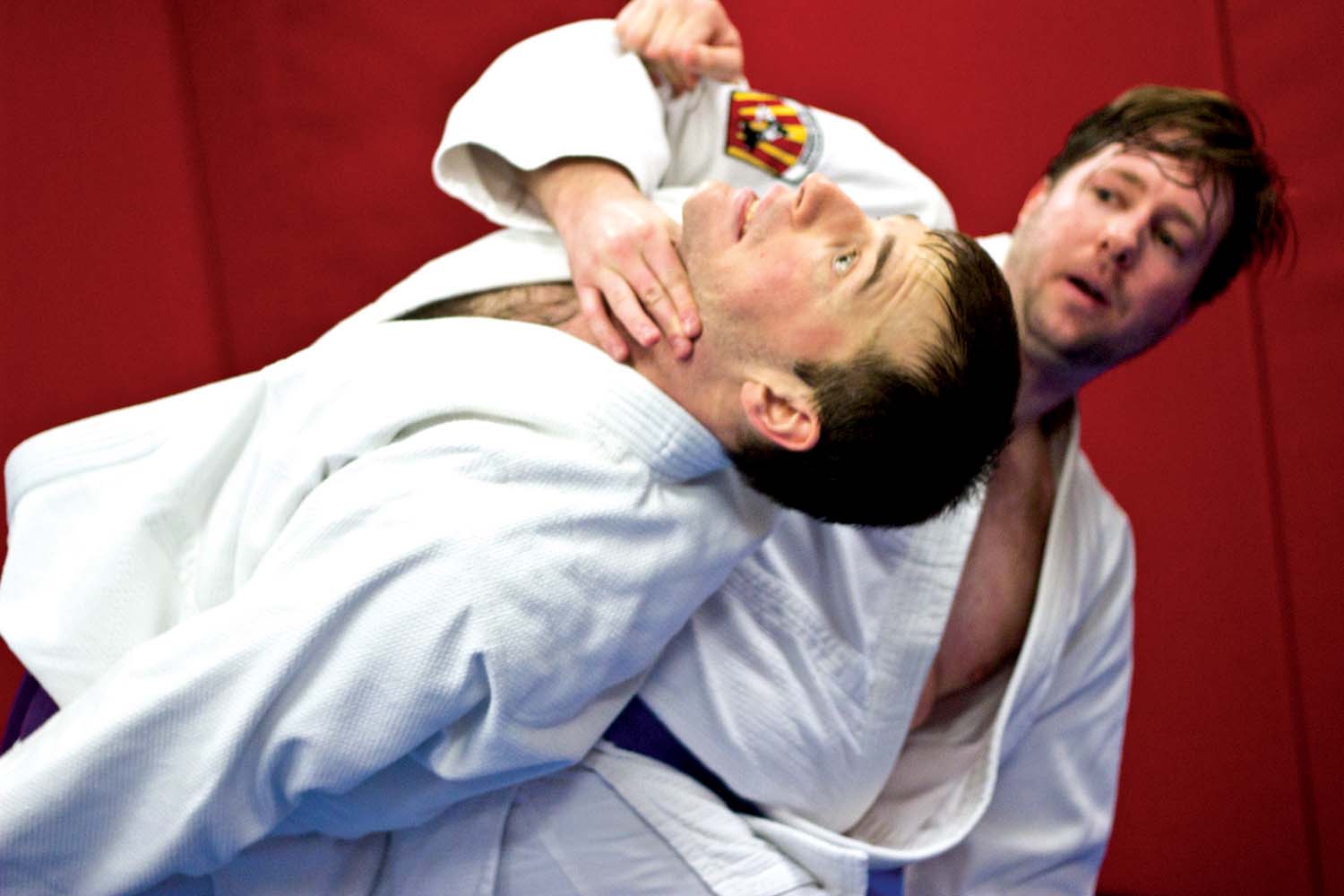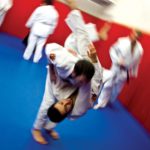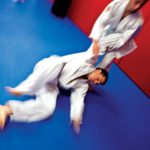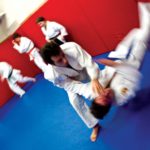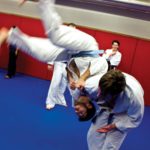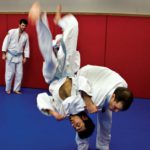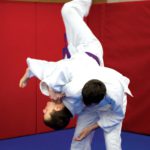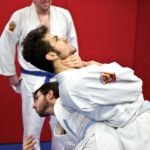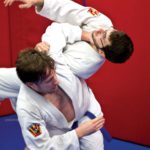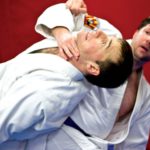Amidst bone-crushing slams and drill sergeant shouts, Alex Hum lives to tell the tale of York’s martial arts scene
Walking down the quiet halls of Tait McKenzie Centre, I’m instantly drawn to the action bursting through the doors of Studio 2.
Screams of “Ya! Ha! Hai sensei!” accompanied by the sound of bare feet shuffling across the gymnasium mats fill the basement floor. York’s Jiu Jitsu Club is already halfway through their two-hour training session.
I take off my shoes and respectfully bow before stepping into the dojo. Members of the Jiu Jitsu Club are flying through the air and being thrown down onto the mats as they practice grappling moves.
In this dojo, a variety of belt colours shows the diversity of experience among the martial artists. Mingling with one another, they’re all doing their best to help each other learn. Everyone is eager to throw and be thrown by their sparring partner in this safe environment.
“Ya-me!” says brown belt Sensei Jennifer Higgs, telling her class to stop. They listen carefully as their sensei teaches them the next move before they continue throwing and grappling each other.
Higgs, alongside her mentor and colleague, started the York Jiu Jitsu club roughly two-and-a-half years ago in September 2010. Her colleague, however, left to teach at the University of Toronto Jiu Jitsu club. Now, Higgs, who has now been practicing Jiu Jitsu for eight years, leads this instructional program at Tait McKenzie.
She explains what Jiu Jitsu is, both in combative style as well as in philosophy.
“A rough translation of the Japanese phrase jiu jitsu is ‘the yielding art,’ or ‘the gentler compliance art.’ There is some striking, but it’s not a striking-based art like Karate or Taekwondo,” says Higgs.
She continues, “It’s similar to Aikido and Judo where the idea is that you are using the momentum and force of an attacker. If someone throws a punch at you, you can dissipate that punch with their momentum to throw them to the ground, and get them in a joint lock or another move like that, getting them in a position where you can restrain them on the ground.”
Higgs says the way Jiu Jitsu teaches people to think is more important than what it physically teaches you to do.
She says, “We can do devastating things, we know joint locks that will damage an arm, elbow, or wrist. We know quite devastating throws as well. But the idea is using reasonable force. If someone just grabs your shirt, yes, you can break their arm in three places, but it’s the idea of having the responsibility to be safe, and only using as much force as necessary.”
Garry Simonian, a third-year philosophy student, has been part of the Jiu Jitsu club for two years, and has recently moved up from his purple belt to a high-ranking light blue belt.
For Simonian, learning and practicing Jiu Jitsu is more of a mental exercise.
“The philosophy of Jiu Jitsu is really learning more about yourself—self growth, self discipline. Bruce Lee would say ‘All knowledge is self knowledge,’ and that’s what I’m learning here,” he says.
Over the last two years, Jiu Jitsu has changed the way Simonian approaches problems, teaching him to be patient and reasonable.
“The etiquette and everything that I learn here doesn’t just remain in the dojo. It exits with me and extends into my life,” he says.
As of now, there are 13 members registered to the club, not including the many newcomers sporting t-shirts and sweatpants on their first visit. Higgs is expecting more people to join as the semester continues based on the number of people the club drew in last semester.
“Last semester was our record with 25 registered students and a total of 35 people who showed up to the first class out of interest.”
Higgs says the club has been gaining more interest from students every year.
“It’s been growing exponentially. In our first year, we had maybe just 10 people over a semester. It’s great because some people love it and stick around all year, and some people try it and don’t. There’s just a natural attrition rate. It’s good to keep having new generations coming in,” says Higgs.
The club is part of a larger organization called Jitsu Canada, which includes clubs from universities like Trent, Carleton, Queen’s, and University of Toronto, among others across the country.
In the fall term, the club has a cooperative training session with clubs from other universities, as well as from the community, which focuses on demonstrations. Then, in the winter term, these same clubs take part in an annual groundwork competition.
Higgs finds that practicing Jiu Jitsu is important to her on many different levels and sees value in teaching it to others.
“On the surface, I’m fitter, more flexible, and healthier than I was in high school and university. I want to see other people be healthy as well. It’s a great network and community. I didn’t know anyone as a first year student, and now I’ve been a job reference for my students, and I’ve got friends throughout different cities and different countries,” says Higgs.
“It’s been a good way of pushing myself. You put yourself in uncomfortable situations whether you’re tired, or any other situation you’re not comfortable with. It’s really good for keeping yourself awake and keeping yourself alive.”
(The York Jiu Jitsu Club runs all year, including the summer. Higgs welcomes all students—no experience or coordination necessary. Sessions take place Mondays and Wednesdays in Studio 2 of Tait McKenzie from 6:30 to 8:30 p.m.)
By Alex Hum, Features Editor


